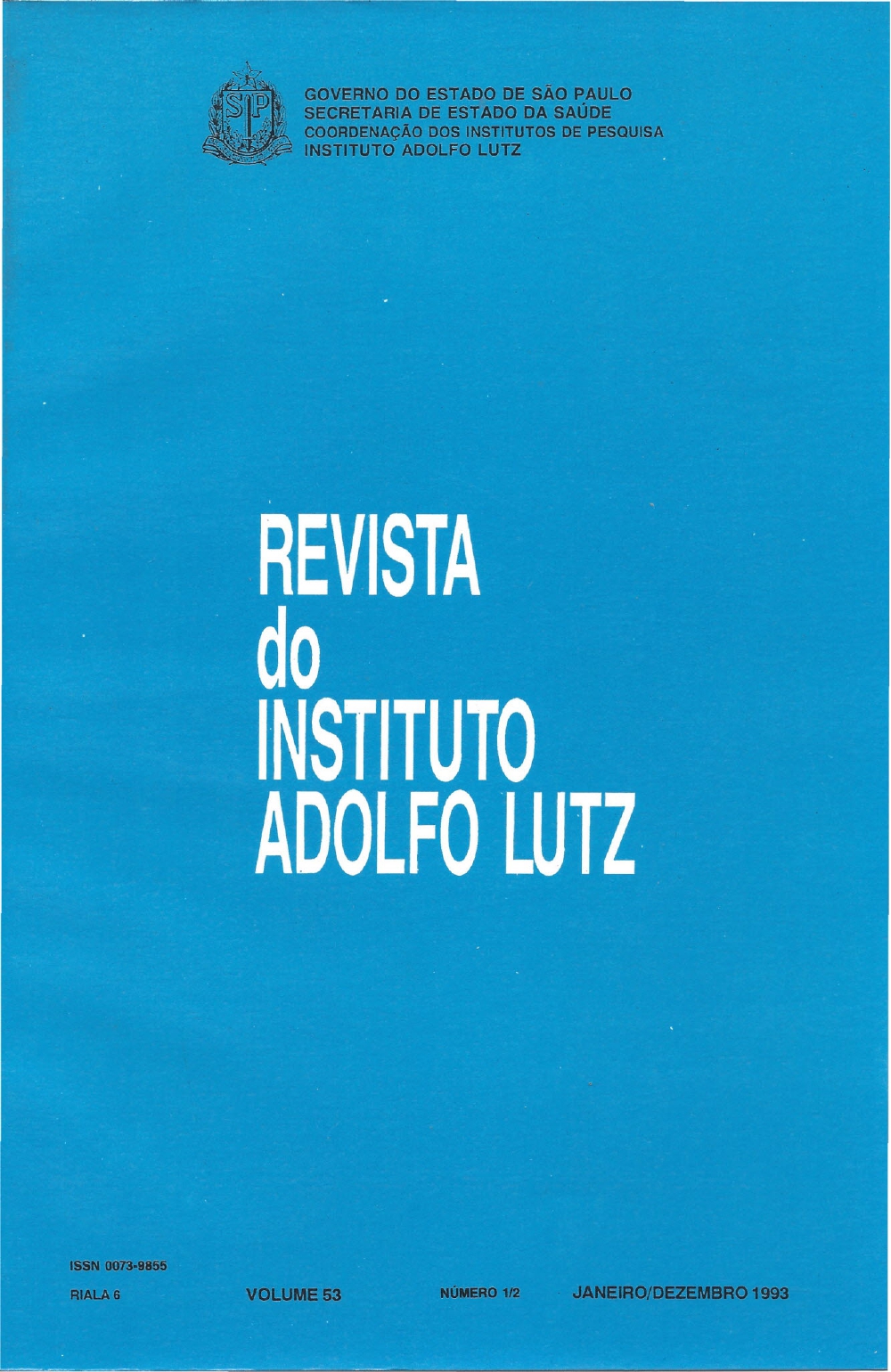Abstract
Endosulfan is a pesticide by ester group with sulphurous acid of the chlorinated cyclic dial. For registering purposes with the aim of extending its range of uses for other applications in Brazil, a study of its residues, as well as of its metabolite, endosulfan sulfate, was performed on potato, tomato, orange, papaya, apple, maracuja and strawberry crops, on which it was applied according to good agricultural practices. The methodology employed was the described for Mitchell with modification. It was satisfactory recovery (82,1% to Endosulfan I, 84,4% to Endosulfan II and 91,0% to Endosulfan sulfate, medians of the fortifyed samples). The lower quantification threshold 0,01 mg/kg (ppm) by gas chromatography with electron capture detector. Among the 60 samples analysed, 20 untreated samples (control) and 40 samples for crops treated with Thiodan, emulsionable concentrate with 350 g/l of active ingredient, Endosulfan I was detected in 19 samples (47,5%), Endosulfan II in 21 (52,5%), and Endosulfan sulfate in 17 (42,5%). No residues were detected in the samples of orange and maracujá pulp, as well as in those of potato, whereas in the papaya pulp samples only the metabolite, endosulfan sulfate, was detected. The highest levels of Endosulfan I, Endosulfan II and Endosulfan sulfate were those detected in orange peel samples, with a total amount reaching the 0.48 and 0.69 mg/kg levels. In the apple, tomato and strawberry samples, the detected values were comparatively low, all of them remaining inside the range for maximum residue limits (MRL) according to Codex Alimentarius.
References
2. BRASIL. Leis, decretos, etc. Decreto no 98.816, de 11/01/90. Diário Oficial, Brasília, 12 jan. 1990. Seção I, p. 876-888.
3. CODEX ALIMENTARlUS COMMISSION, Codex maximum limits for pesticide residues. 2nd. ed. Rome, FAO/WHO, 1986, vol. 13 (FAO/WHO Food Standards Programme).
4. FRANK R.; BRAUN, H E. & RIPLEY B. D. - Monitoring Ontario-grown apples for pest control chemicals used in their production, 1978-86. Food Additives and Contaminants, 6(2): 227-234, 1989.
5. IWATA, Y.; WESTLAKE, W.E.; BARKLEY, J.H.; CARMAN, G.E. & GUNTHER, F.A. – Aldicarb residues in oranges, citrus by products, orange leaves, and soil after an aldicarb soil-application in orange grove. J. Agric. Food Chem., 25(4): 933-936, 1977.
6. MITCHELL, L.R. - Collaborative study of the determination of endosulfan, endosulfan sulfate, tetrasul and tetradifon residues in fresh fruits and vegetables, Journal of the Association of Official Analytical Chemists, 59(1):209-212, 1976.
7. SAX, N.!. - Dangerous properties of industrial materiais. Van Nostrand Reinhold - ed. New York, 2:384-385,1988.
8. THOMA K. & NICHOLSON B.C. - Pesticide losses in runoff from a horticultural catchment in South Australia and their relevance to stream and reservoir water quality. Environ. Technol. Lett., 10(1):117-129,1989.
9. WORLD HEALTH ORGANlZATION, Geneva, 1984. Endosulfan. Geneva, WHO, 1984. 62p. (Environmental Health Criteria 40).
10. WORTHING, C.R. - The Pesticide Manual. The British Crop Protection Council-7 ed. Croydon, 1983.

This work is licensed under a Creative Commons Attribution 4.0 International License.
Copyright (c) 1993 Instituto Adolfo Lutz Journal
